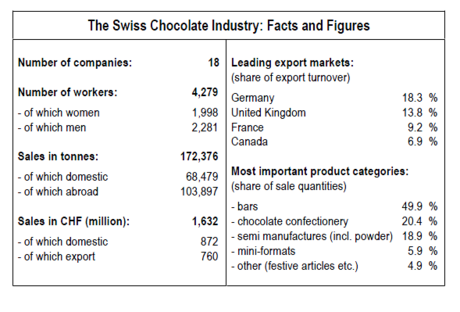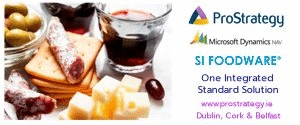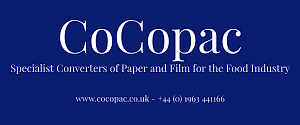‘Overvalued’ currency harms Swiss chocolate industry
The chocolate industry in Switzerland has reported a value sales decline in 2012 as the strong Swiss franc harmed exports and warm weather damaged consumer sentiment at home, according to trade association Chocosuisse. 
In 2012, the Swiss chocolate industry saw a 3.4% drop in turnover to CHF 1.6bn ($1.7bn) and a 2.2% fall in volume sales to 172,376 metric tons.
“The principal reason for this is the overvalued Swiss Franc which made Swiss chocolate products more expensive aboard and made imported chocolate cheaper,” said Chocosuisse, which is comprised of 18 members including Lindt, Mondelez, Nestlé (Callier) and Villars.
Exports hurt by Swiss Franc
The majority of chocolate produced in Switzerland is sold abroad (60.3%), predominantly to Germany (18.3%), the UK (13.8%), France (9.2%) and Canada (6.9%).
In 2012, foreign sales fell 7.3% to C HF 760m ($814m) in 2012, which Chocosuisse called “a result of the continuing strength of the Swiss France and the slowdown in the world economy”.
Only white chocolate bars posted higher sales in international markets.
Value sales to EU countries fell 4.1%, but the industry did see growth outside the EU in China, Bahrain, India, Japan, the Philippines and South Korea.
Hot weather meltdowns domestic sales
In its home market, the industry maintained values sales at CHF 872m ($934m) but sales volumes fell 1.2%.
Chocosuisse said that this was due in part to a warm spring and summer heat wave.
“The decline in tourist numbers compared with the previous year has also had a negative effect on sales,” it added.
“Finally, price-conscious consumers have increasingly been buying the imported products, which have become cheaper as a result of the currency situation.”
However, the average consumption of chocolate in Switzerland remained unchanged at 11.9 kg per capita, among the highest in the world, and small chocolate bars saw 4.6% sales gains.

































